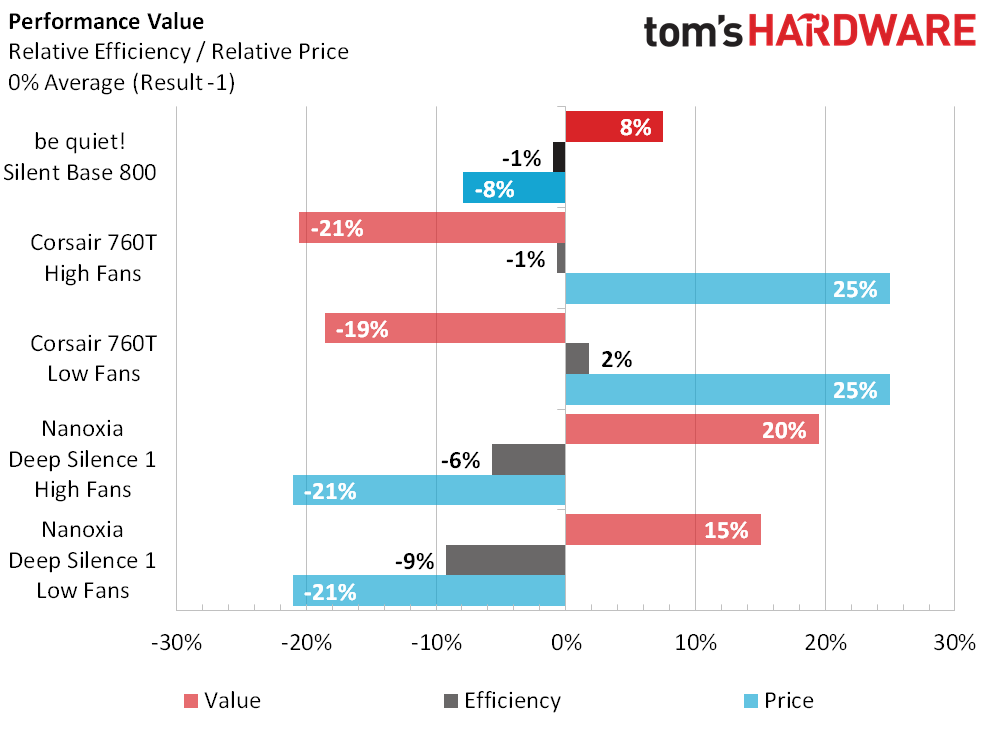be quiet! Silent Base 800 Case Review
Promising “unique performance and usability,” the Silent Base 800 debuts the case line of power supply brand be quiet!
Why you can trust Tom's Hardware
Test Results
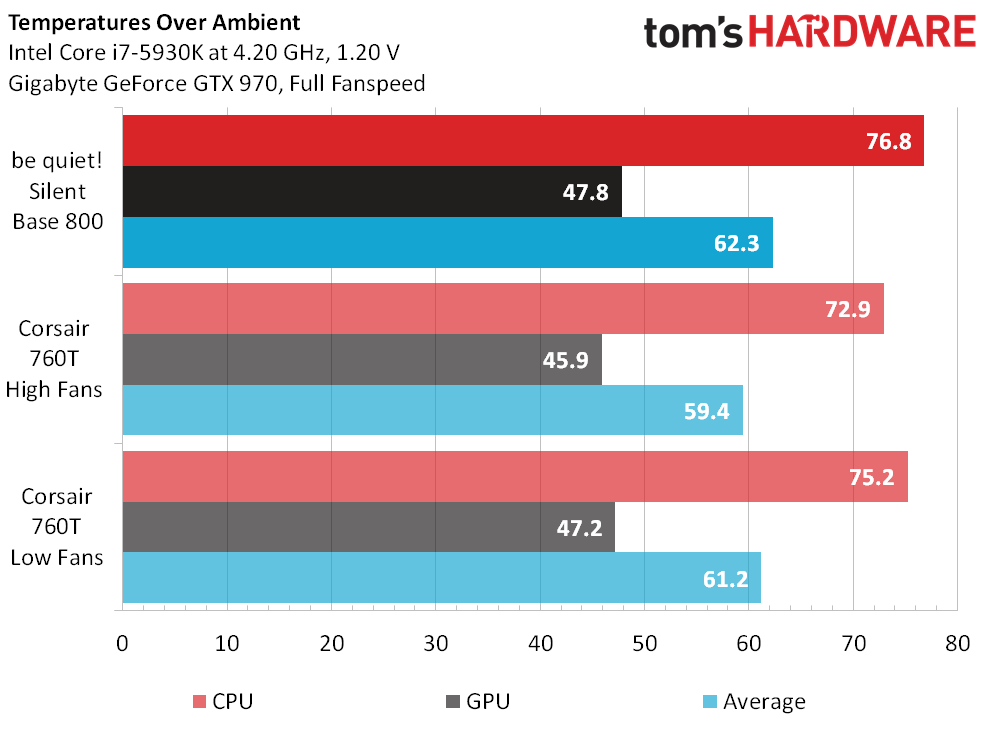
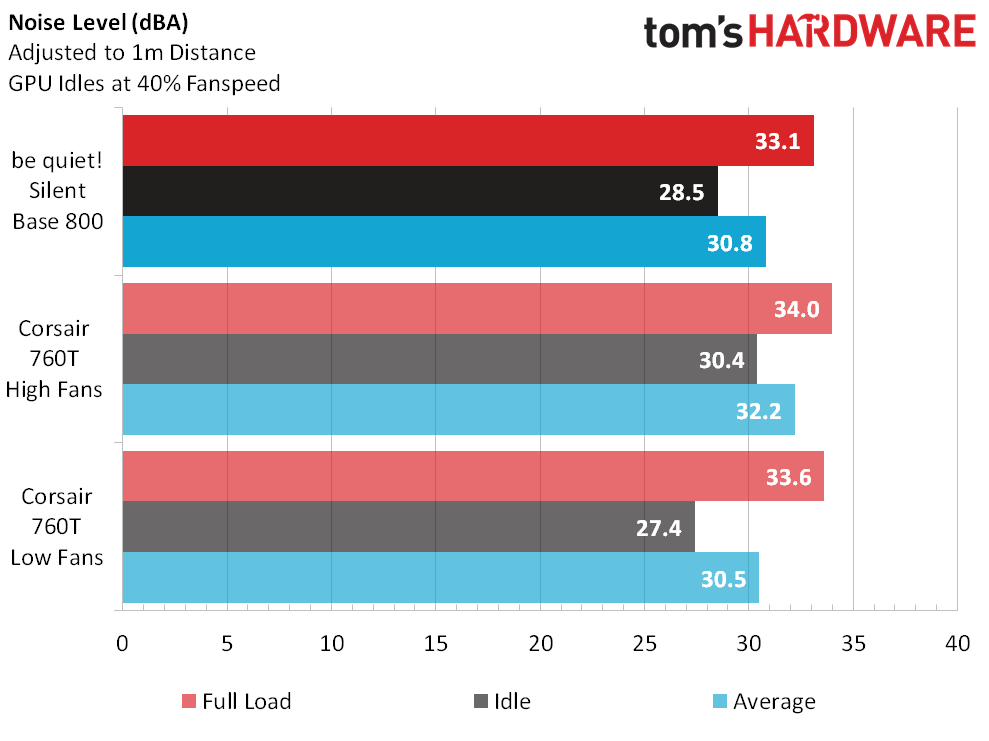
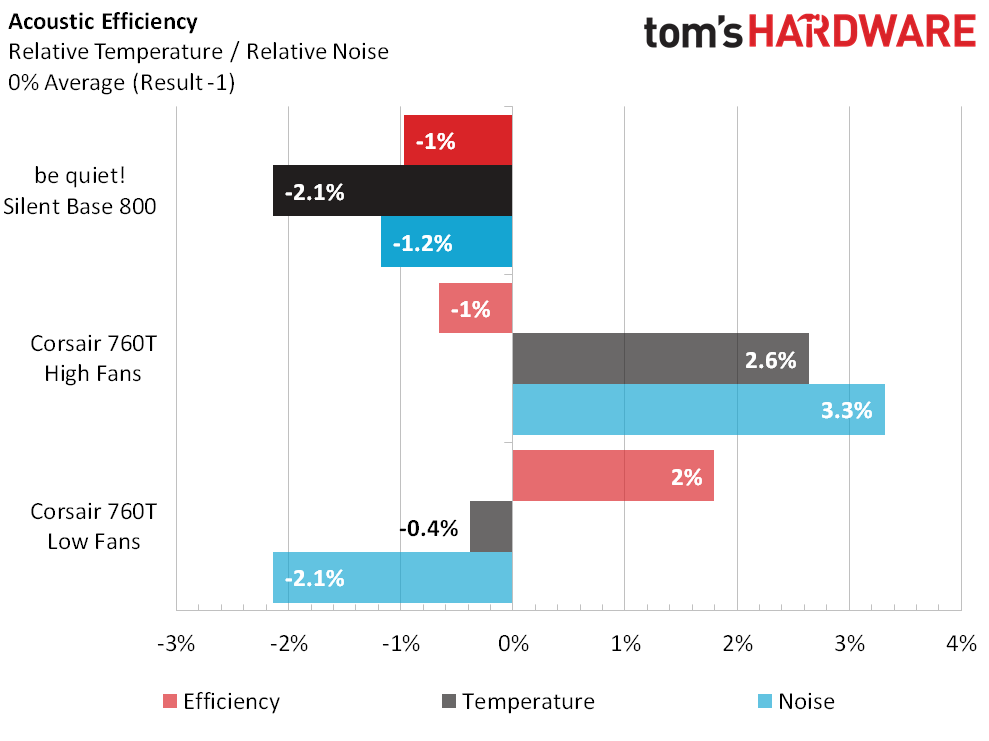
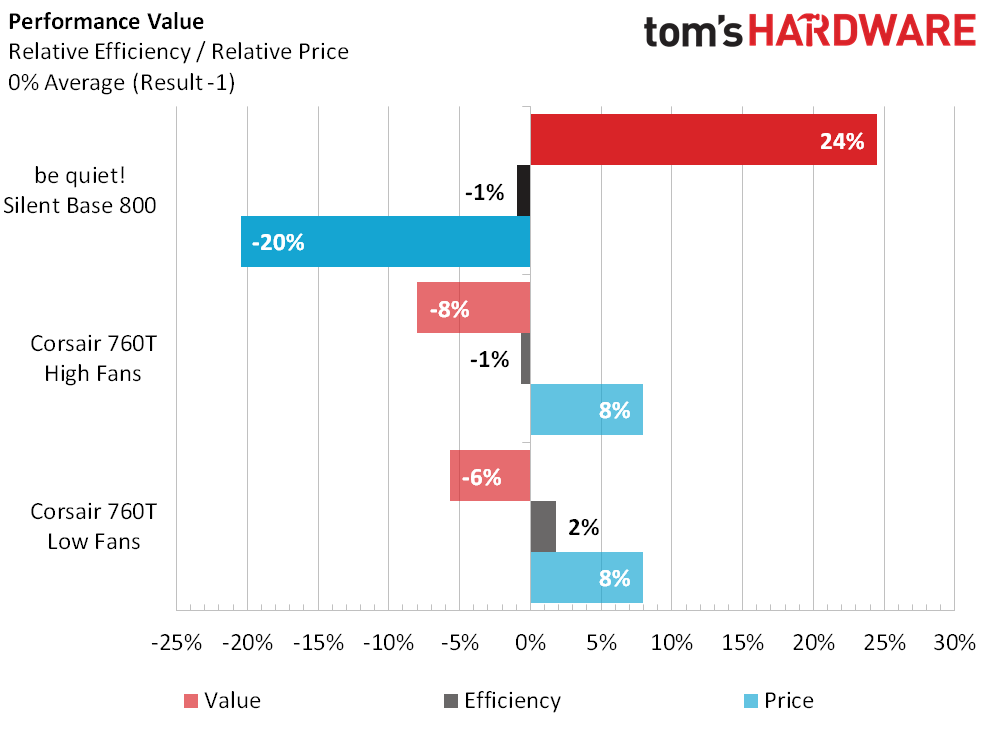
We can see right away that the small CPU cooler and internally vented graphics card push CPU heat up by around 25° compared to previous hardware, and that the noise-dampened Silent Base 800 copes well with the extra heat; we observe thermal readings only a few degrees higher than Corsair’s free-flowing 760T.
But our noise measurements cause us to question the effectiveness of the Silent Base 800’s foam dampening, as it’s only one decibel quieter than the 760T with the fans running at full speed.
Even though it’s barely warmer and a little quieter than the 760T, the Silent Base 800 still falls around 1% below the 760T in our comparison of temperature to noise.
Fortunately, the Silent Base 800 is also cheaper than the 760T. There’s no way Corsair can make up a $40 price premium with only a 1% performance advantage.
The true challenge for the Silent Base 800 isn’t trumping the value of Corsair’s high-priced Graphite 760T though, but rather overcoming the feature set of mainstream “quiet cases” like the Fractal Design Define R4 and Nanoxia Deep Silence 1. Made from heavier steel and using a heavier asphalt mat, weight is the biggest drawback of those competitors. Both can be bought for $120, and the DS1 even has an eighth expansion slot to allow a fat graphics card in the case’s bottom slot. On a whim, I retested the Deep Silence one and plugged its numbers into the charts to see where it would end up in a value comparison.
Get Tom's Hardware's best news and in-depth reviews, straight to your inbox.
-
Shneiky I am a big be quiet! fan (no pun intended). Been using their power supplies for years and I am using their fans wherever I can. But what turns off from this case is the lack of cuts in the tray for attaching cables with zip-ties. This is a big miss from be quiet!. Wonder how they forgot about it. It is a vital point for descent cable management in the back.Reply -
Anathemata Considering the Fractal Design R5 already beats out the 760T in my own experience, I don't know how this case can be competitive unless you are specifically looking for a case that has colored trim and a completely black interior (that you can't see, because no window).Reply -
g-unit1111 Huh, as an R4 owner I don't see the similarities between that and this case. It looks pretty nice for the price, the only thing that would make it better would be a clear side window. Not a fan of the orange color though.Reply -
Crashman Reply
I don't think you understand how illogical many buyers are, that's why it says "combine the look and price of a full tower with the component space of a mid-tower" :)15635311 said:Pros: ..... Full-Height
That's a feature not a 'pro'.
-
synphul I think the whole point of the silent base was the sound dampening and while some people prefer windows it would defeat the purpose of a padded side panel for noise dampening. Not a bad review but why so late? Everyone else reviewed this case back in nov/dec 2014. This review is nearly 5mo later than the ones from techspot, techpowerup, hexus. I know sometimes reviews get held up but surprised the silent base 900 or something hasn't released already. Five months is a long time in this industry.Reply
